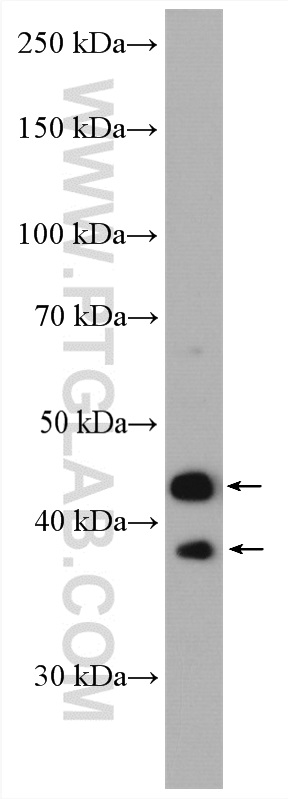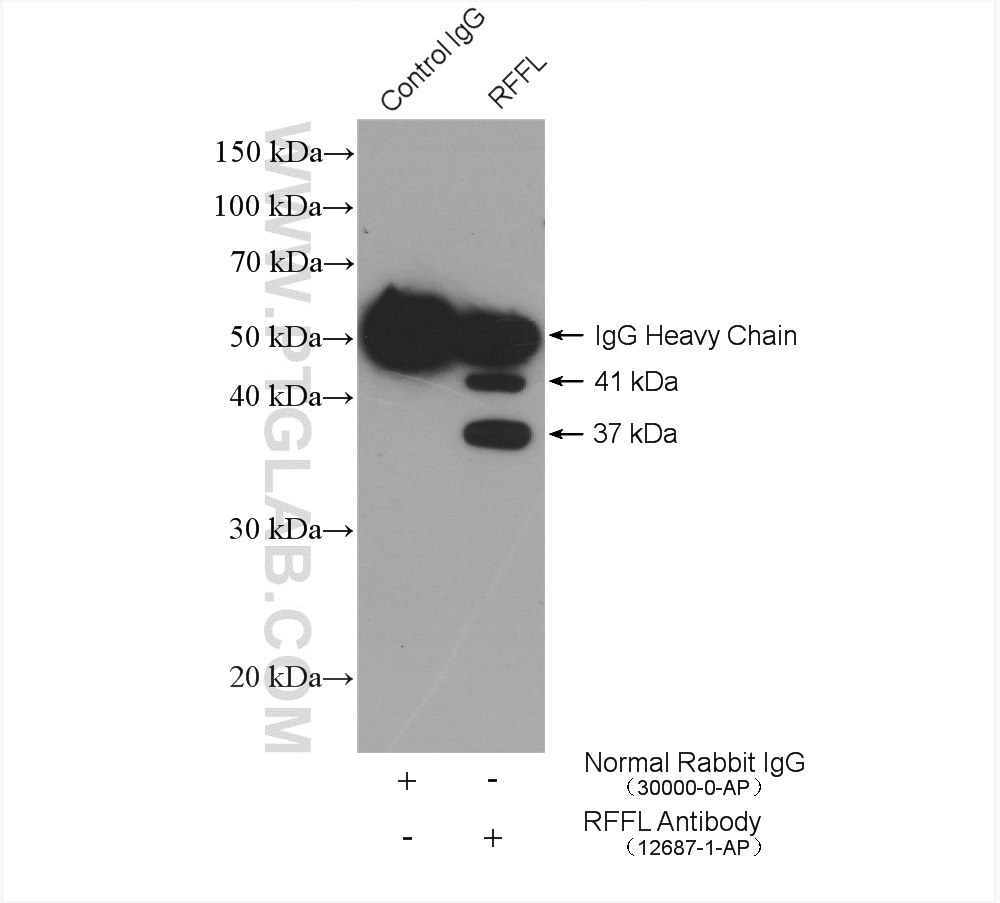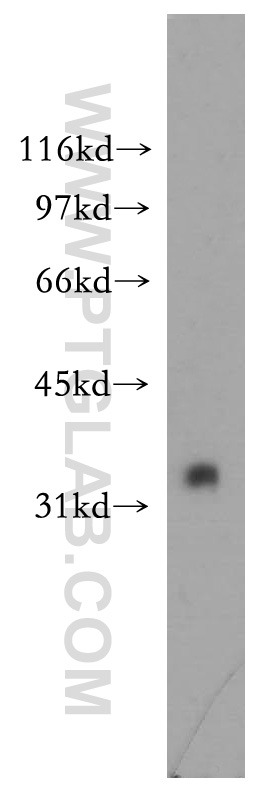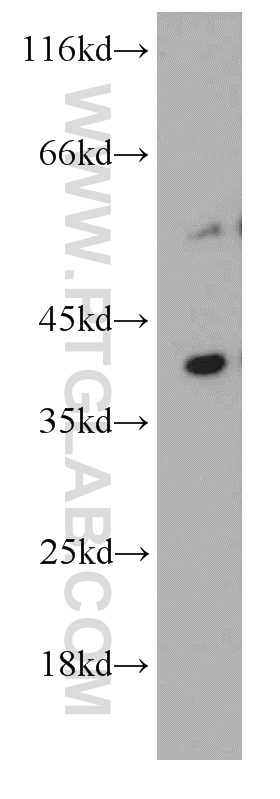验证数据展示
经过测试的应用
| Positive WB detected in | mouse testis tissue, mouse thymus tissue |
| Positive IP detected in | mouse testis tissue |
推荐稀释比
| 应用 | 推荐稀释比 |
|---|---|
| Western Blot (WB) | WB : 1:500-1:1000 |
| Immunoprecipitation (IP) | IP : 0.5-4.0 ug for 1.0-3.0 mg of total protein lysate |
| It is recommended that this reagent should be titrated in each testing system to obtain optimal results. | |
| Sample-dependent, Check data in validation data gallery. | |
发表文章中的应用
| KD/KO | See 1 publications below |
| WB | See 2 publications below |
| CoIP | See 1 publications below |
产品信息
12687-1-AP targets RFFL in WB, IP, CoIP, ELISA applications and shows reactivity with human, mouse, rat samples.
| 经测试应用 | WB, IP, ELISA Application Description |
| 文献引用应用 | WB, CoIP |
| 经测试反应性 | human, mouse, rat |
| 文献引用反应性 | human |
| 免疫原 | RFFL fusion protein Ag3380 种属同源性预测 |
| 宿主/亚型 | Rabbit / IgG |
| 抗体类别 | Polyclonal |
| 产品类型 | Antibody |
| 全称 | ring finger and FYVE-like domain containing 1 |
| 别名 | CARP 2, Caspase regulator CARP2, Fring, RFFL, RIFIFYLIN, RING finger protein 189, RING finger protein 34 like, RNF189, RNF34L |
| 计算分子量 | 327 aa, 37 kDa |
| 观测分子量 | 37-41 kDa |
| GenBank蛋白编号 | BC028424 |
| 基因名称 | RFFL |
| Gene ID (NCBI) | 117584 |
| RRID | AB_10644289 |
| 偶联类型 | Unconjugated |
| 形式 | Liquid |
| 纯化方式 | Antigen affinity purification |
| UNIPROT ID | Q8WZ73 |
| 储存缓冲液 | PBS with 0.02% sodium azide and 50% glycerol pH 7.3. |
| 储存条件 | Store at -20°C. Stable for one year after shipment. Aliquoting is unnecessary for -20oC storage. |
实验方案
| Product Specific Protocols | |
|---|---|
| WB protocol for RFFL antibody 12687-1-AP | Download protocol |
| IP protocol for RFFL antibody 12687-1-AP | Download protocol |
| Standard Protocols | |
|---|---|
| Click here to view our Standard Protocols |
发表文章
| Species | Application | Title |
|---|---|---|
J Biol Chem Competition for cysteine acylation by C16:0 and C18:0 derived lipids is a global phenomenon in the proteome | ||
Cell Death Dis ETS-1-activated LINC01016 over-expression promotes tumor progression via suppression of RFFL-mediated DHX9 ubiquitination degradation in breast cancers
|



